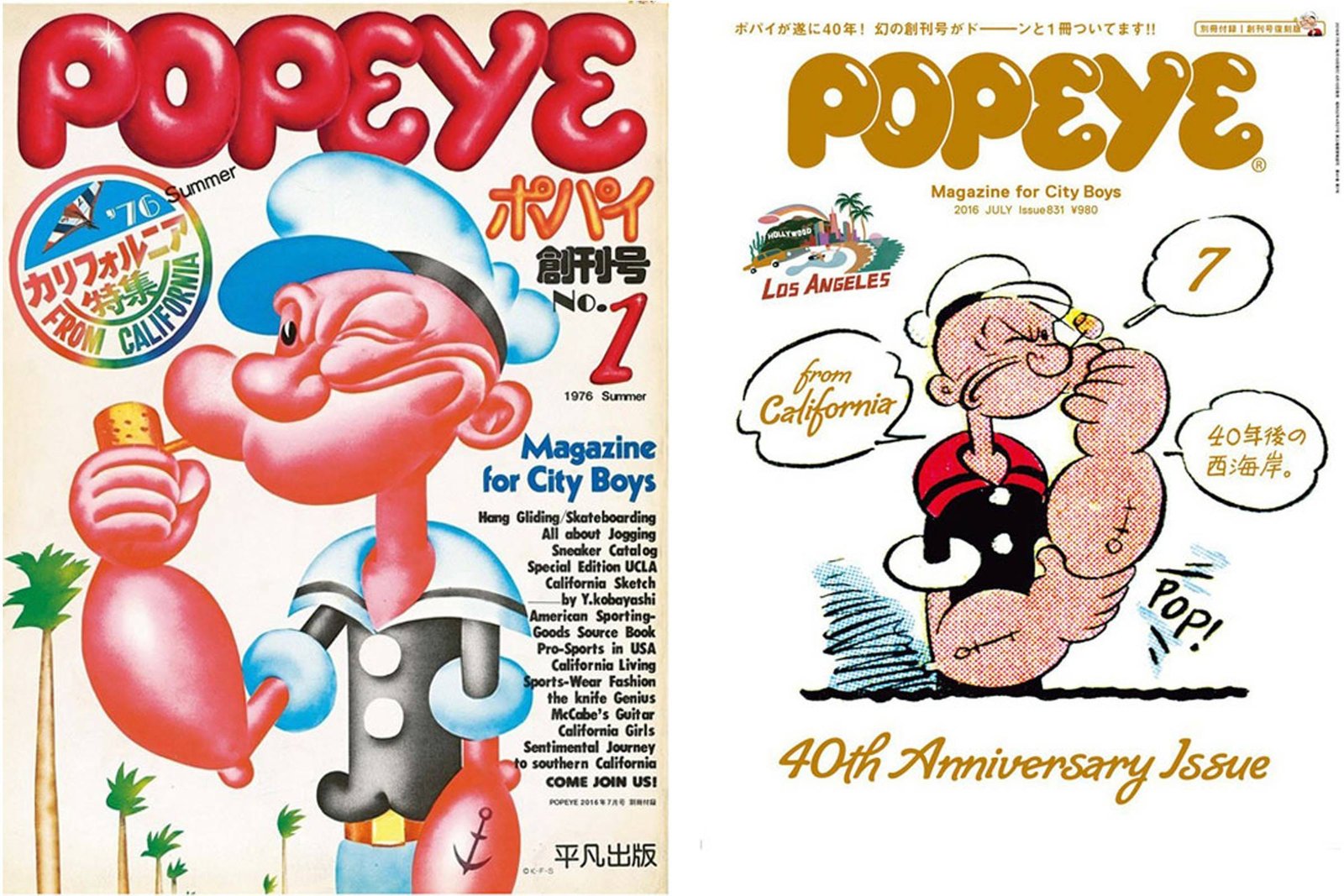
Introduction:
Honestly, when you first hear Popeye Magazine, you might think of the spinach eating sailor with massive forearms. But no this isn’t about cartoons. It’s about one of Japan’s most iconic lifestyle publications that’s been shaping the way young men (and increasingly women) think about fashion, design, food, and city life since the 1970s.
And here’s the thing. Popeye Magazine doesn’t just tell you what’s trendy. It paints a picture of how to live—a whole lifestyle blueprint. Every issue feels like stepping into Tokyo’s streets, but with a curious, globally inspired eye. If you’ve ever wondered how Japanese youth culture built its reputation for taste, subtlety, and sophistication, Popeye Magazine is part of that answer.
Let’s break down its origins, influence, relevance, and future—because the story of this publication is, in many ways, the story of modern Japanese style itself.
What Is Popeye Magazine?
Popeye Magazine is a monthly Japanese men’s lifestyle magazine first published in 1976 by Magazine House (the same company behind Brutus and Casa Brutus). It was originally billed as the “Magazine for City Boys,” targeting young urban men who wanted to understand the evolving culture of fashion, art, and metropolitan living.
Back in the ‘70s, Japan’s youth were hungry for global inspiration. The American casual scene, European tailoring, California skate culture—they all played a role. Popeye Magazine became the cultural translator, showing Japanese readers not just what to wear, but how to be.
Fast forward to today, and Popeye has become much more than a men’s style guide. It’s an archive of Tokyo life, a design compass, and—let’s be real—a cult object in itself.
Why Popeye Magazine Still Matters
So why talk about Popeye Magazine in 2025, nearly fifty years after its launch? The answer lies in its staying power.
-
Authenticity: Unlike quick-hit fashion blogs or TikTok trends, Popeye offers depth. Articles aren’t about “10 hacks for summer fashion.” They’re essays, interviews, and photo spreads that breathe.
-
Curation: Popeye acts like your stylish friend who knows which café is worth visiting, which indie brand is about to blow up, or which city is buzzing with new culture.
-
Timelessness: Issues from the 1980s still feel fresh today. The mix of minimal design and cultural storytelling makes it evergreen.
In short, Popeye Magazine doesn’t chase trends—it sets them.
Core Features of Popeye Magazine
Let’s look at what makes Popeye Magazine special, broken down into its core features:
| Feature | What It Means | Why It Matters |
|---|---|---|
| Fashion Editorials | Global streetwear meets Tokyo minimalism | Shapes international men’s style |
| City Guides | Spotlights cafés, bookstores, neighborhoods | A living map of Tokyo & beyond |
| Design & Interiors | Covers architecture, furniture, home aesthetics | Inspires lifestyle beyond clothes |
| Food & Culture | Restaurants, recipes, dining rituals | Connects readers to authentic experiences |
| Art & Literature | Interviews, exhibitions, book features | Intellectual edge for the “city boy” |
Each issue feels like a curated world. You don’t just flip through it—you live inside it for a while.
Case Study: How Popeye Changed Tokyo’s Fashion Scene
Here’s a real example. In the 1980s, Popeye Magazine started running spreads on American Ivy League fashion—think button-down shirts, chinos, loafers. For Japanese youth, this wasn’t just clothing. It was a whole identity: cosmopolitan, confident, modern.
Fast forward a decade, and “Ivy style” became one of Japan’s most enduring subcultures. To this day, brands like Beams and United Arrows carry that DNA. Without Popeye bridging the cultural gap, Japanese menswear might not have become the global force it is today.
Comparisons: Popeye vs Other Magazines
To get perspective, let’s stack Popeye Magazine against other lifestyle titles.
| Magazine | Focus | Audience | Tone |
|---|---|---|---|
| Popeye | Lifestyle + fashion + culture | Young, urban, global-minded | Playful, curious |
| Brutus | Culture + intellectual features | Older professionals | Serious, analytical |
| GQ | Fashion + celebrity + luxury | International, affluent men | Polished, commercial |
| Monocle | Global affairs + design + lifestyle | Cosmopolitan readers | Smart, formal |
See the difference? Popeye is less about being polished and more about being cool in a lived-in, authentic way.
Challenges & Solutions
Like many print publications, Popeye Magazine has faced challenges:
-
Digital shift: Younger audiences live online.
-
Competition: Blogs, Instagram, TikTok, YouTube.
-
Language barrier: Mostly in Japanese, which limits global reach.
How has it adapted?
-
Embracing collaborations (with brands like Nike, Comme des Garçons).
-
Expanding into digital archives and online snippets.
-
Positioning itself as a collectible object—a print magazine you want on your coffee table.
Myths & Misconceptions
Let’s clear a few things up:
-
Myth: Popeye Magazine is only about fashion.
Fact: It’s about the entire lifestyle—food, travel, design, culture. -
Myth: It’s outdated in the digital age.
Fact: Popeye thrives because it offers what the internet can’t: depth, tactile beauty, permanence. -
Myth: It’s only for men.
Fact: While marketed for “city boys,” women increasingly read it for its unique voice.
The Future of Popeye Magazine
Looking ahead, Popeye Magazine is likely to lean into its role as a cultural archive and collectible. Think limited-edition issues, collaborations with global creatives, and maybe even bilingual versions for international fans.
In my opinion, its future lies in balancing analog charm with digital accessibility. Imagine a Popeye app where every old issue is digitized, searchable, and interactive. That’s gold waiting to happen.
Practical Tips:
If you’re new to Popeye Magazine, here’s how to make the most of it:
-
Don’t rush. Each issue is thick and layered.
-
Start with the photography. The visuals are often more powerful than words.
-
Use it as a city guide. Visiting Tokyo? Bring a copy along.
-
Collect past issues. They’re like time capsules of style.
-
Mix inspiration. Don’t just copy the looks—adapt them to your own personality.
Expert Perspectives
Kenya Hara, the legendary Japanese designer, once said: “Design is not just about objects—it’s about life.” That philosophy resonates deeply with Popeye. By presenting not just clothes but cafes, books, and apartments, the magazine proves that style is inseparable from daily living.
FAQs About Popeye Magazine
1. What is Popeye Magazine?
Popeye Magazine is a Japanese men’s lifestyle publication launched in 1976, covering fashion, food, design, travel, and urban culture.
2. Is Popeye Magazine only for men?
No. While marketed as a magazine for “city boys,” it’s widely read by women and anyone interested in culture.
3. Where can I buy Popeye Magazine?
You can find it at Japanese bookstores, select international stockists, and online platforms that ship worldwide.
4. Is Popeye Magazine available in English?
Most issues are in Japanese, though special features sometimes include English translations. Collectors often use it more for visuals than text.
5. Why is Popeye Magazine so influential?
Because it shaped Japan’s approach to fashion and lifestyle by introducing global trends in an accessible, localized way.
6. How often is Popeye Magazine published?
It’s a monthly magazine, with themed issues ranging from food culture to travel to seasonal fashion.
7. Can I access Popeye Magazine digitally?
Yes, but options are limited. Some issues are archived online, though the print version remains the centerpiece.
8. How is Popeye different from GQ?
GQ leans luxury and celebrity; Popeye leans authentic, quirky, and Tokyo street culture-driven.
9. Is Popeye Magazine collectible?
Absolutely. Vintage issues from the 70s–90s are highly sought after by fashion and design enthusiasts.
10. What makes Popeye Magazine unique?
Its mix of lifestyle, authenticity, and design-focused storytelling. It doesn’t just report trends—it creates culture.
Conclusion:
Popeye Magazine is more than paper and ink. It’s a cultural lens, a time machine, and a style mentor rolled into one. From its Ivy-style spreads in the 80s to today’s design-driven city guides, it has consistently shaped how Tokyo—and the world—defines “cool.”
And truth be told, in an age where everything is digital and disposable, Popeye feels like a treasure. You don’t scroll past it. You sit with it. You keep it. You let it remind you that style isn’t about chasing trends—it’s about living with curiosity, taste, and joy.


